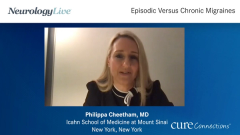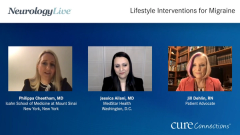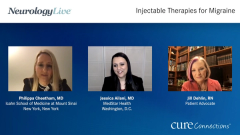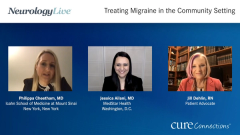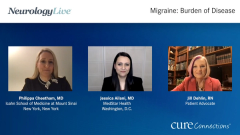
Limitations of Traditional Therapies for Migraine
Limitations, in terms of safety and efficacy, of older conventional therapies used to treat migraine.
Episodes in this series

Philippa Cheetham, MD: Jill, I wanted to bring up a couple of treatment scenarios. When I first received my diagnosis, I was offered Topamax [topiramate] but was doing a huge amount of public speaking on the radio and on television. When I was informed about the potential difficulty with finding words on this medication, it really frightened me. I did not want to be on national television or presenting at an international conference and be unable to find the words, so I opted to rely on Imitrex [sumatriptan]. Then my GP [general practitioner] said, “Why don’t you try one of the β-blockers?” I felt so fatigued on those. In the end, we hear about calcium channel blockers, antidepressants, anticonvulsants, and there seems to be so much of this “try this, try that” attitude. But the adverse effect profiles of some of these medications are quite frightening. Have you been in a situation where you have tried some of these more conventional treatments and either not had any benefit from them at all or the adverse effects themselves have been prohibitory?
Jill Dehlin, RN: I have had a lot of experience with different preventives, rescue medicines, and acute medicines. I can tell you I have tried β-blockers, and I am like you; I was so tired and I was depressed. I was stuck and I could not do anything, so I got off that. I have tried the antidepressants; I have tried Botox [botulinum toxin]. Botox worked well for me, until it did not. That is when I became chronic. The adverse effect profiles of these treatments are very difficult to manage. As Dr Ailani said, we are really constantly balancing the severe effects of having migraine disease and these frequent attacks with the adverse effects of these medicines and figuring out when that adverse effect is too intolerable for you to continue to take it.
Philippa Cheetham, MD: Dr Ailani, I remember being given an injection pen to use in an acute episode, and the very first time I tried to use it, I was unable to coordinate my fingers and thumbs to use it during an acute attack. Then, the second time, when I got my hand-eye coordination together, I was alone at home and I suddenly thought, “Oh, my goodness, what if I overdose and kill myself with this injection migraine medication?” Obviously, there is a big effect of migraine on gastric absorption of these oral medications. Do you think that is a big factor that may explain why so many of these treatments are ineffective?
Jessica Ailani, MD: I think that medications are sometimes ineffective because they are oral. I think that is especially true if patients have a lot of nausea with their attacks, or they are vomiting. Sometimes I think medications are ineffective if they are taken too late. This is especially true; people will wait. People always want to take over-the-counter, inexpensive, “less serious” medication. I get told this a lot by my patients, that this a prescription, it has to be the big guns, that they save it for their worst attack, and then my counter to that is how do they know it is going to be their worst attack? That is really gambling with your migraine.
A lot of our time is spent on educating patients on the importance of taking their medicine really early. To do that, though, they have to not have so many attacks that they end up in a situation where they have a headache due to medication overuse. I think that is where there is a limitation to our medications. Some of them, if they are overused, can provoke medication overuse headaches or rebound headaches. Some of them can cause other adverse effects like tingling, nausea, or an upset stomach. The NSAIDs [nonsteroidal anti-inflammatory drugs] can cause gastric upset, and can be contraindicated in certain patient populations, so it can be very limiting. I think one of the big reasons many options do not work is that patients may not be able to take medicine on time. Another is not having enough mechanisms of action. Not every migraine is the same, not every patient with migraine has the same type of migraine attack, and only having 1 mechanism of action is not going to be enough to treat the millions of people with migraine. That is why it is very important to us that we have different types of medications available to patients, so they have mechanisms that might be different, that might match the type of migraine they are having.
Philippa Cheetham, MD: Thank you for watching NeurologyLive® Cure Connections®. If you enjoyed the program, please subscribe to our e-newsletter to receive upcoming programs and other great content right in your inbox. Thank you so much.
Transcript Edited for Clarity
Newsletter
Keep your finger on the pulse of neurology—subscribe to NeurologyLive for expert interviews, new data, and breakthrough treatment updates.

